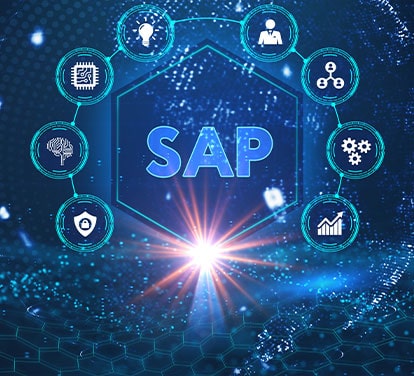In the contemporary digital landscape, enterprises and institutions a mass extensive datasets from a variety of origins, including customer interactions, sales, transactions, and social media. Yet, effectively managing and analyzing this data presents a formidable challenge. This is where ETL (Extract, Transform, Load) practices, combined with comprehensive quality assurance services, play a pivotal role in ensuring a smooth and secure transition.
ETL is a a transformative procedure that aids organizations in collecting, converting, and storing data from diverse sources. In this blog, we delve into the intricacies of ETL, highlighting its profound significance in efficiently managing and analyzing substantial data volumes.
Understanding ETL
ETL constitutes a three-fold process, encompassing data extraction from diverse origins, data transformation into a usable format, and the subsequent loading of transformed data into a designated target destination. This meticulous ETL journey acts as a conduit, converting raw, intricate data into a structured, meaningful format that lends itself to analysis and informed decision-making.
Commencing with the extraction phase, ETL extracts data from an array of sources, encompassing databases, files, and web applications. This extracted data is then meticulously transformed into a standardized format, entailing data cleaning, filtering, aggregation, and enrichment. Finally, the transformed data finds its home in a designated target destination, often a data warehouse, where it becomes readily accessible for analysis.
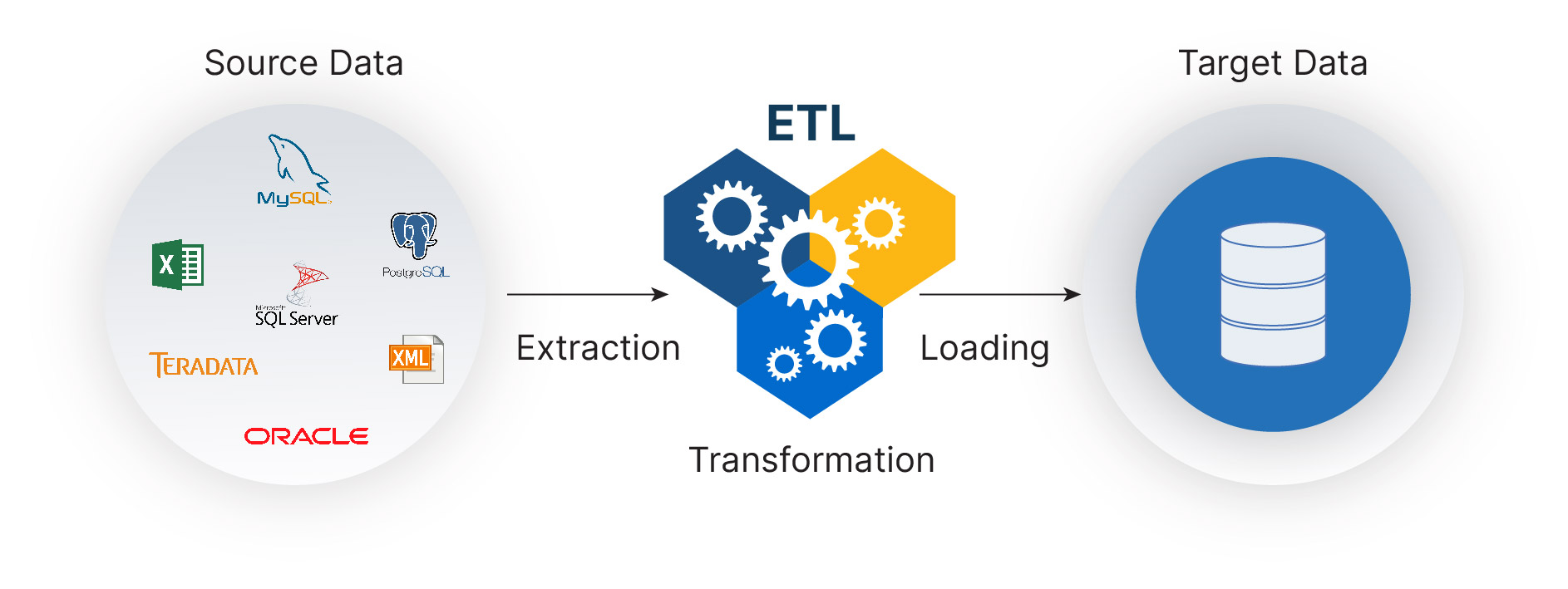
Phases of ETL
Phase I: Extraction
In the initial extraction phase, data is sourced from databases, flat files, and APIs, often existing in formats such as XML, CSV, or JSON. This phase encounters challenges when dealing with data scattered across disparate locations or diverse formats. ETL technologies come to the rescue, automating and streamlining this process for enhanced efficiency.
Phase II: Transformation
The transformation phase harmonizes data formats and tailors them to align with the specifications of the target system. This stage involves cleansing, filtering, joining disparate datasets, and performing calculations. Managing large datasets during transformation poses challenges, making accuracy crucial, as errors can have cascading effects downstream.
Phase III: Loading
During the loading phase, transformed data finds its place in a target system, often a data warehouse or a business intelligence platform. Challenges here encompass ensuring data compliance with the target system's requirements and loading correctness. ETL technologies provide automation solutions, accompanied by visual data flow representation for swift issue detection and resolution.
Significance of ETL
ETL's significance lies in its ability to manage and analyze voluminous data effectively. Without ETL, businesses would grapple with the efficient management and analysis of intricate data, hampering data-driven decisions in today's dynamic business realm. Key benefits of ETL include:
- Data Quality Enhancement: ETL refines data quality through cleansing, filtering, and standardization, ensuring accuracy and consistency for streamlined analysis.
- Data Integration Empowerment: ETL unifies data from diverse origins into a central repository, like a data warehouse, simplifying access and analysis for informed decisions.
- Resource and Time Savings: ETL automates data extraction, transformation, and loading, freeing resources for critical tasks like data analysis and decision-making.
- Facilitating Business Intelligence: ETL is an integral component of business intelligence (BI) systems, extracting, transforming, and loading data into warehouses for insightful analysis and informed choices.
Types of Testing’s:
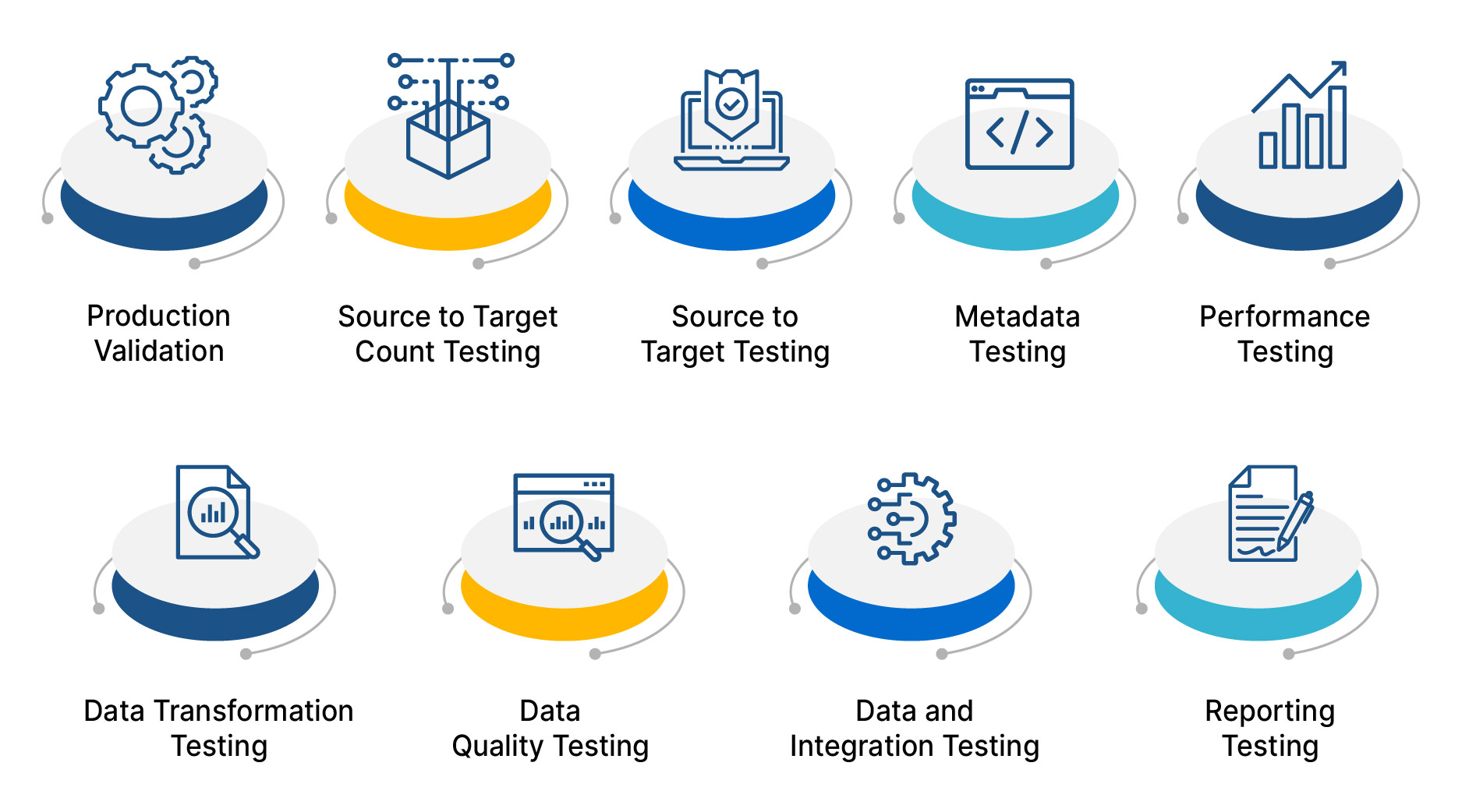
ETL Tools
ETL Tools and Quality Assurance: While selecting an ETL solution, it's vital to consider data complexity and requirements. ETL tools enhance the process with their unique advantages and features, integrating seamlessly into the quality assurance process. Robust quality assurance services, encompassing application security testing, assure data integrity and safeguard against vulnerabilities.
ETL tools comparison
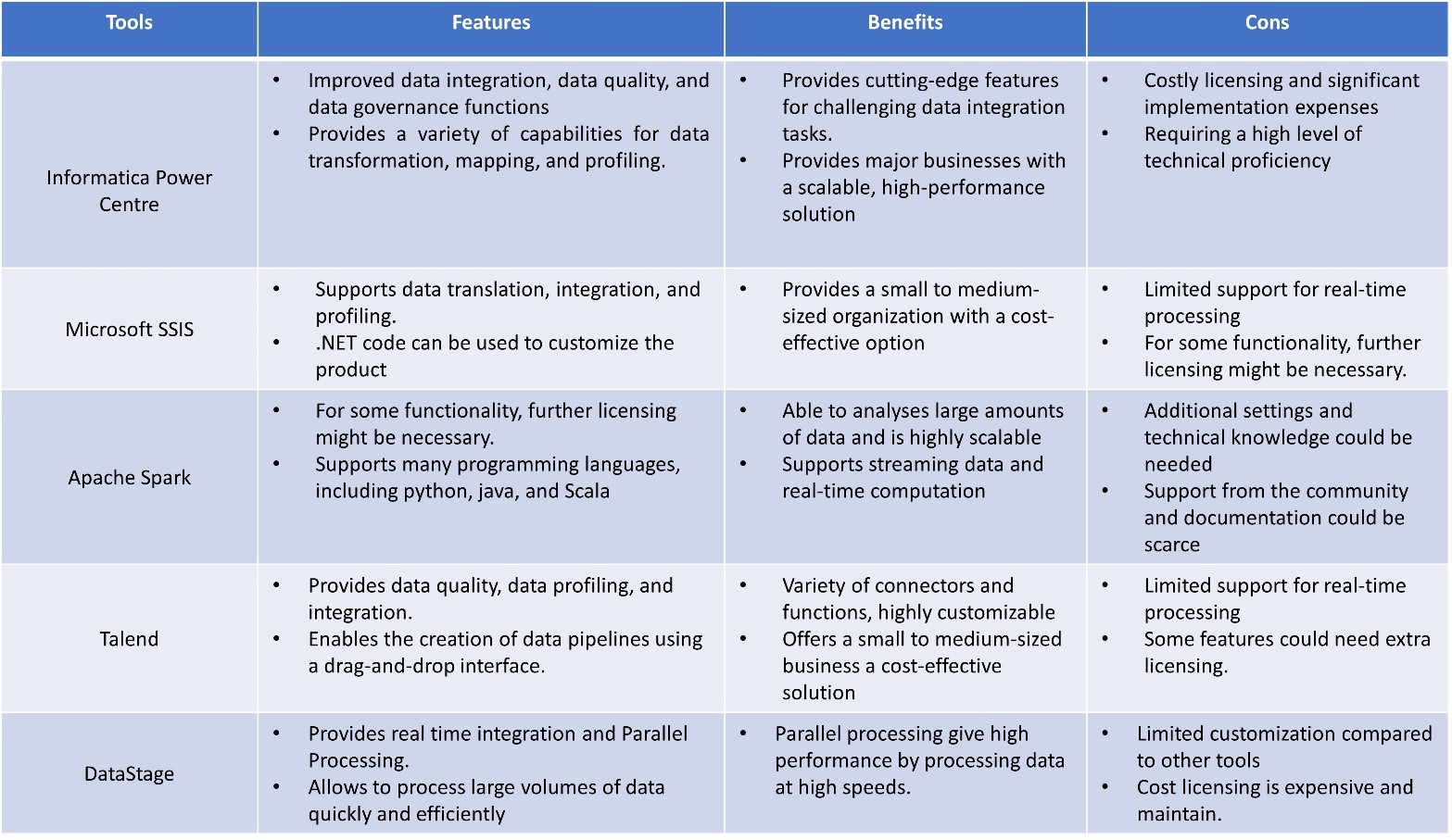
Best Practices for Effective ETL:
ETL best practices to consider:
- Precise Goal Definition: Clearly outline ETL project goals and requirements to choose the right ETL tool and ensure project success.
- Data Profiling: Perform data profiling to understand data structure and quality, aiding in planning transformations.
- Scalability and Performance Planning: Anticipate data volume and choose an ETL tool that can scale, while ensuring hardware and infrastructure readiness.
- Data security and privacy: Adhere to data security standards and regulations like GDPR or CCPA.
- Data Validation and Testing: Implement thorough data validation and testing to ensure accuracy and completeness.
- Documentation and Maintenance: Document ETL processes for repeatability and maintainability, with version control for tracking changes.
- Regular Monitoring and Maintenance: Consistently monitor and maintain ETL processes, ensuring efficient operation and adapting to changing data sources.
Challenges in ETL
ETL presents several challenges, requiring diligent effort to ensure data accuracy, completeness, and timeliness. By embracing ETL testing solutions and following best practices, organizations can confidently execute ETL projects and streamline data migration. In this intricate landscape, comprehensive quality assurance services and application security testing stand as pillars, ensuring ETL's reliability and the integrity of the data it processes.
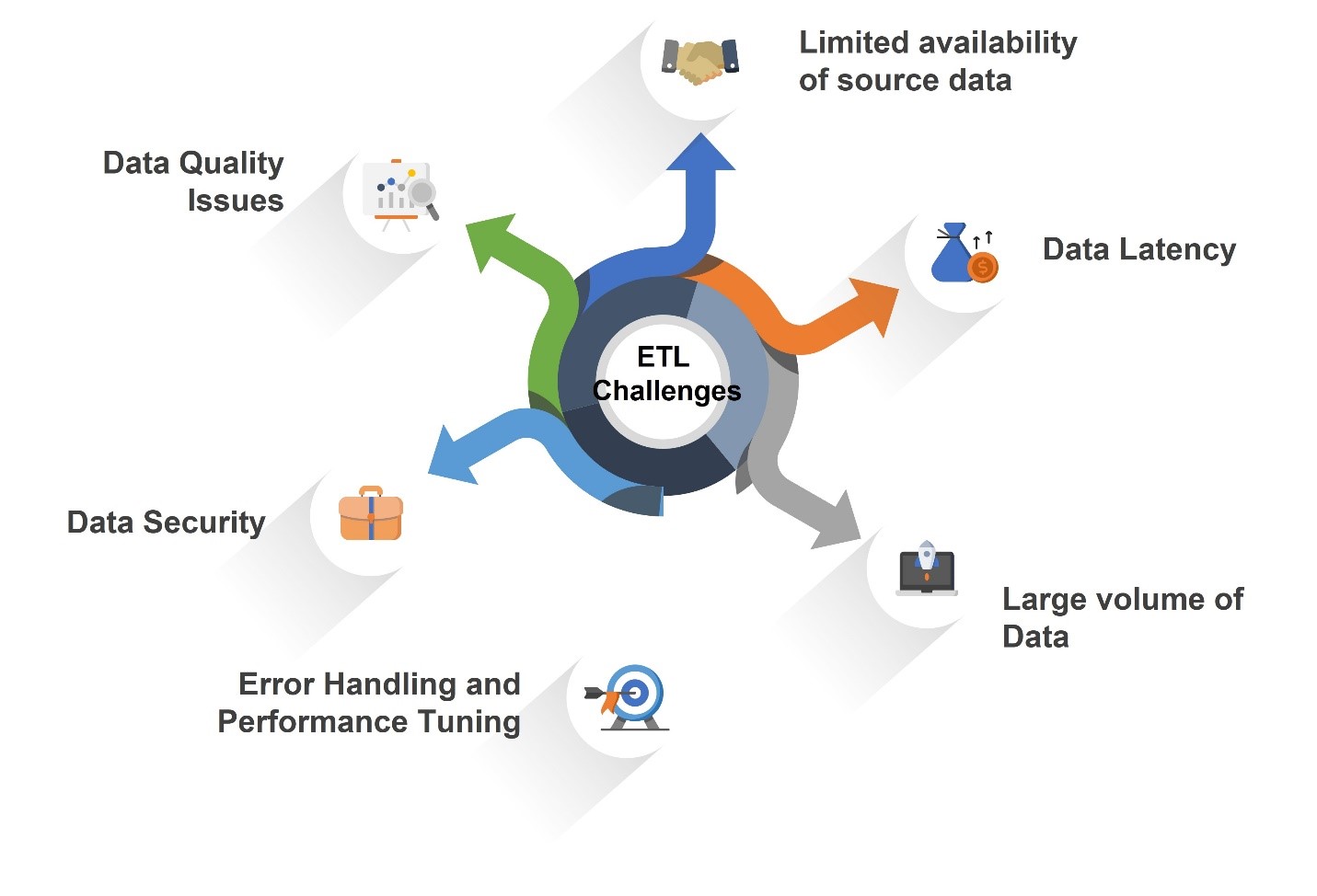
The Synergy of ETL and Quality Assurance by Jade Global
In the world of data migration, ETL practices and quality assurance services are not standalone processes; they are interwoven. ETL ensures the smooth transfer of data, while quality assurance, particularly when provided by experts like Jade Global, guarantees its accuracy, reliability, and security. At Jade Global, we understand that quality is paramount in enterprise digital transformations. We offer a wide range of Digital Quality Assurance (DQA) services to ensure that your digital solutions are not only robust but also market ready. With our expertise, you can achieve faster testing cycles, a remarkable increase in testing automation efficiency, and a reduction in maintenance and development efforts. Our goal is to help you eliminate delays and errors in delivery, ensuring that your business can thrive in a competitive landscape.
When these two components, ETL and quality assurance by Jade work in synergy, businesses can confidently embark on data migration projects, knowing that their data will be seamlessly moved to its new destination while maintaining the highest standards of quality and integrity.






